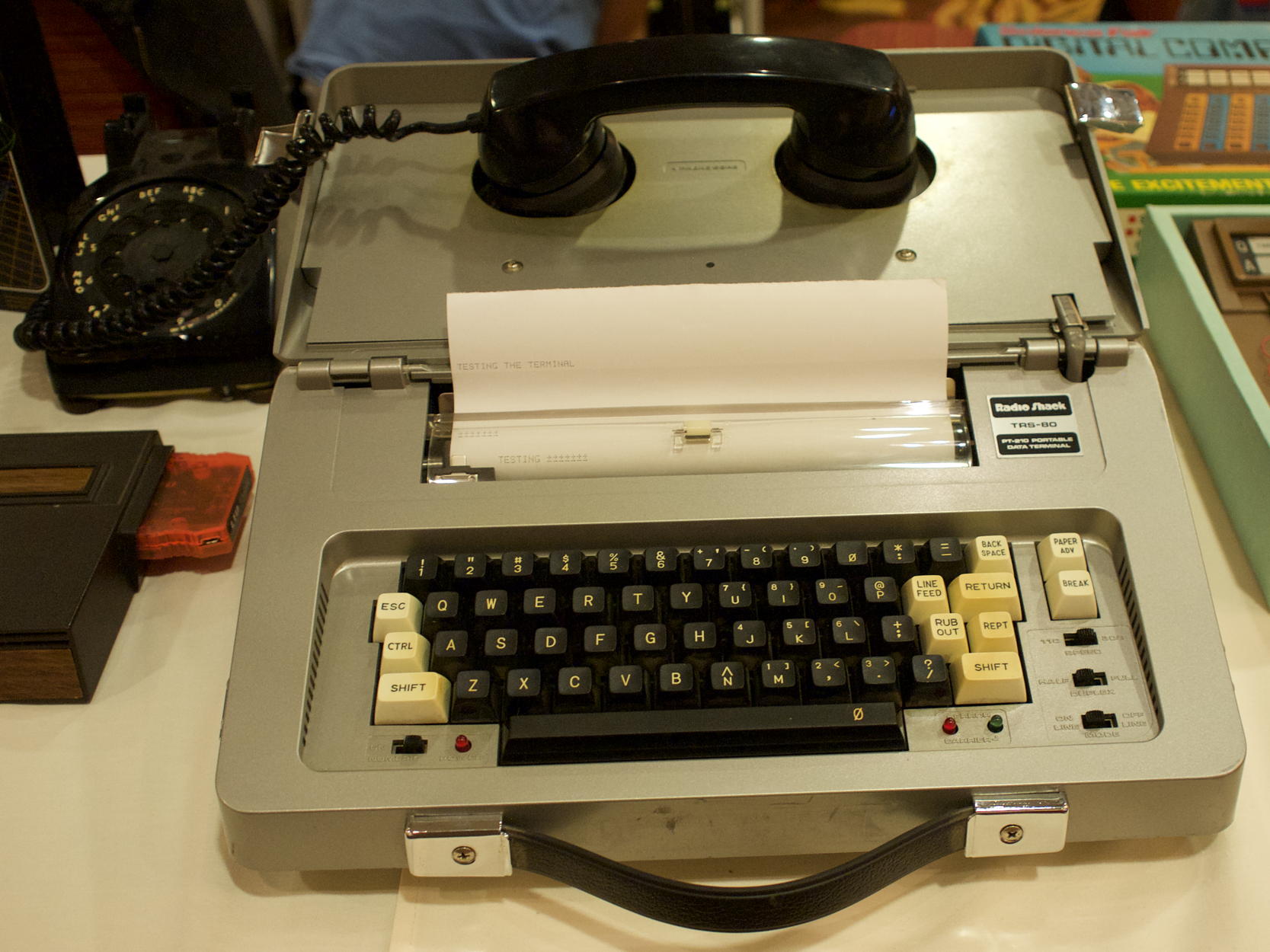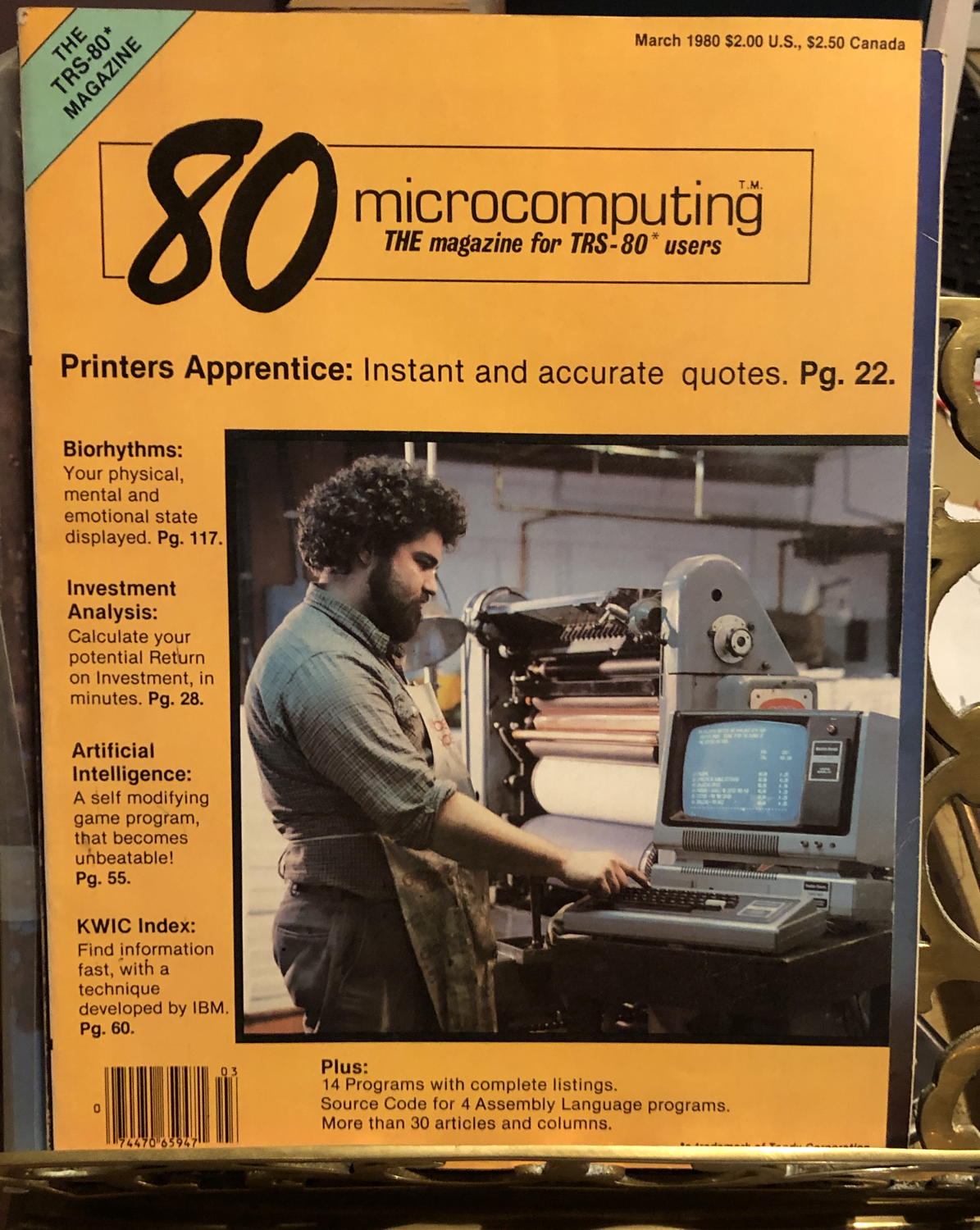Peer to peer email from 1980
I’m going through the first year of 80 microcomputing and in the March 1980 issue, Wayne Green starts out his monthly rant—which was far less rantish than he was known for—by describing his vision of the future of email:
My concept of EM runs something like this: The time is well on its way when a microcomputer/terminal will be on most business desks and in most homes. I’ll be able to type in a message, using the telephone number as an address. This message will then be sent to the addressee via telephone lines almost immediately.
My system will dial the number and if it’s busy, it will continue to check the number every minute or so. When the line is free, the system will send a tone that prevents the phone from ringing on the other end and actuates the EM unit.
After the system receives a handshake signal, tell the other unit how many bits of information are forthcoming, send the message, await an okay, and hang both up. Time, at 1200 baud, perhaps one minute.
The EM unit on the other end will have a light indicating an awaiting message. This can be read when convenient and a response made… all within a minute or two, if needed.
On the one hand, I could make fun of him for thinking, pre-Internet, that email would be like everyone having a bulletin board system. On the other, this is a damn cool setup.
BBSs already existed in 1980, though they were far from their mid-90s peak; it is interesting that his vision was not a store-and-forward system using BBSs. Everyone knew the home and office phone numbers of their friends and colleagues; everyone did not know person@BBS. And, of course, his vision also emulates the answering machine of the time, but merges them with FAX systems1 so that neither the caller nor the sender need to be at the telephone to communicate.
His vision was asynchronous. Unlike synchronous tasks such as going to the Post Office or the DMV, asynchronism vastly speeds up communication. Because, as he noted, neither the sender nor the receiver have to coordinate anything.
Such a system will not only speed up mail from several days or a week to a minute or two, but will also cut down on a lot of phone calls. I really hate to make phone calls.
Him and, it appears, just about everyone else, because while he called it electronic mail what he described is very close to text messaging. No one makes phone calls anymore. Most people I know, at least, use text messages nearly exclusively, at least to handle the preliminaries. Green’s description of his idea was as near to text messages as you could get with the known technology of the time. Use the recipient’s phone number as the address? Check. No coordination with the recipient? Check. Send a message in text? Check. Read at leisure, reply at leisure? Check. Check. It’s the answering machine on steroids. Very likely he took the FAX machine and removed the paper.
What fascinates me about it is what he does not include. Green was a ham radio operator. He was well aware of packet radio and store-and-forward systems. Once you have little computers on everyone’s phone designed to make and receive small messages, you have a means of drastically undercutting long distance charges. He alluded to this by limiting his message to “time, perhaps one minute”. He emphasizes this again in the June issue that the reason he insists on 1200 baud instead of the then-common 300 is that to “transfer a one page message all within one minute… requires at least 1200 baud.” He again neglects to explain why one minute is so important, but probably because he assumes everyone knows. We all did.
Long distance was the bane of phone service at the time. It was expensive and complicated, and the contortions we went through to avoid the expenses were painful. Some hours were cheaper than others, so we’d calculate the best time to save money vs. the best times to catch the other party (a) awake, (b) home, and (c) not eating dinner. Charges were often calculated in minutes rather than seconds, so we were always cognizant, on short calls if not long ones, of when the amount of time we’d spent was about to cross over into a new minute. It was nuts, and a system that could not survive outside of a government-sponsored monopoly. Green’s proposal could easily have forwarded either from local call to local call (I don’t remember if this was even possible) or have used precise timing to at least avoid extra charges from extra minutes.
Supposedly he had some prototypes of this system built. I’d love to see them. Nowadays, of course, it wouldn’t work at all. Land lines that could be stationed permanently next to a computer are a thing of the past. On the other hand, our cell phones are computers. I know that Apple allows sending text messages either by email address or by telephone number; the accounts are linked so that either works. In a sense his system is the way text messaging works today. It would be interesting to see the hardware he was envisioning. He suggests, in the June issue, that at least 75 percent of computer owners would get an email box if one existed. That seems optimistic. But it would have been revolutionary if it worked and had caught on.
In response to 80-Micro and the TRS-80, 1983-1984: I’m going through some old 80-Micro magazines, and two editorials a year apart caught my eye.
FAX machines often had a redial, so that you scanned the letter and then pressed send and walked away.
↑
- 80 Microcomputing Magazine March 1980 at Internet Archive (magazine)
- Artificial intelligence, biorhythms, and investment analysis. Plus 14 programs with complete listings and source code for 4 assembly language programs!
- Tech visionary Wayne Green: Still on a mission: Robert L. Mitchell
- “Before there were cell phones, before there were laptops, before there were PCs, there was Wayne Green, a ham radio enthusiast turned magazine publisher from Brooklyn, N.Y.… Green was there at the dawn of the microcomputer revolution, committed to two ideas that were novelties at the time: that home enthusiasts could build and program their own computers, and that they'd be willing to subscribe to magazines and buy books that told them how to do so.”
More 80 microcomputing
- Tandy Assembly 2018
- Tandy Assembly was earlier this November, and I have never seen so many Radio Shack computers in one spot. Also, my love affair with daisy wheels is rekindled.
- The Radio Shack Postal Service
- What if Radio Shack had been granted a monopoly on computers in 1981? They’d probably look a lot like the United States Postal Service.
- The Future from 1981
- One of the hallmarks of good science fiction is not just envisioning future technologies, but also the effects of the technology on everyday life. In November, 1981, Wayne Green looked into the usefulness of the secretary in the age of the personal computer.
- 80-Micro and the TRS-80, 1983-1984
- I’m going through some old 80-Micro magazines, and two editorials a year apart caught my eye.
More e-mail
- Using appscript with Apple Mail to get emails and attachments
- Python and appscript can be used to get email messages out of Apple’s OS X Mail client, and even to get and save attachments.
More Wayne Green
- The Future from 1981
- One of the hallmarks of good science fiction is not just envisioning future technologies, but also the effects of the technology on everyday life. In November, 1981, Wayne Green looked into the usefulness of the secretary in the age of the personal computer.


